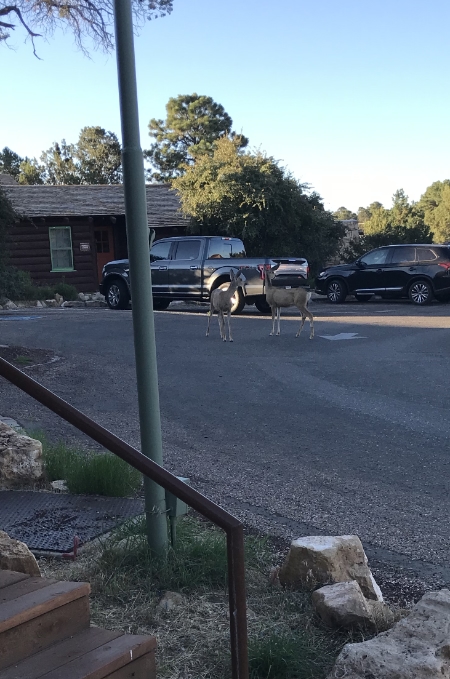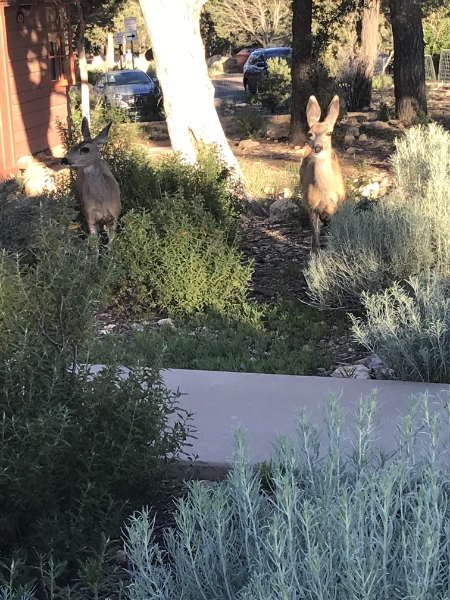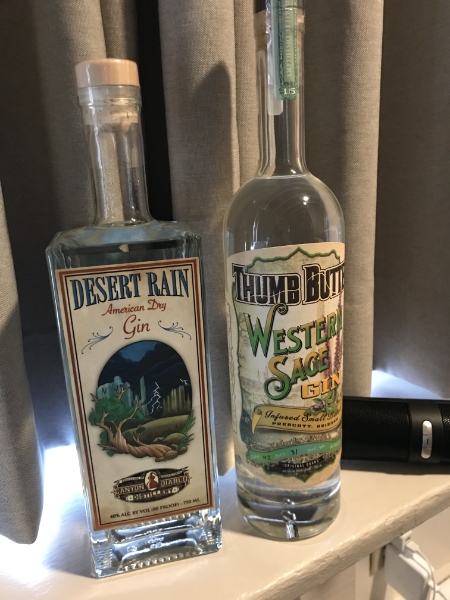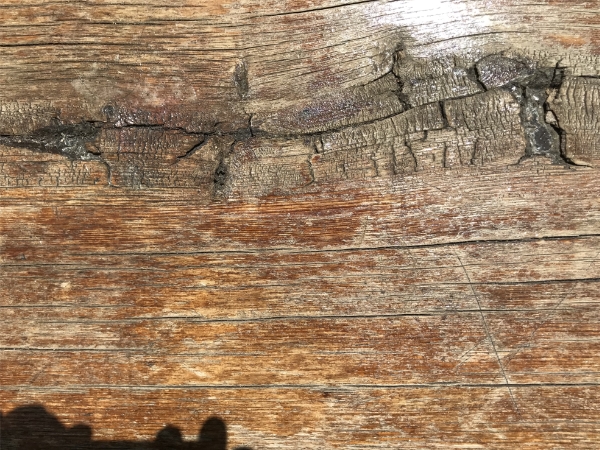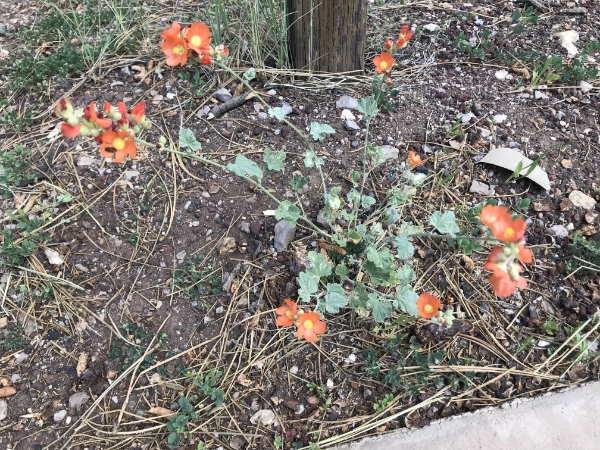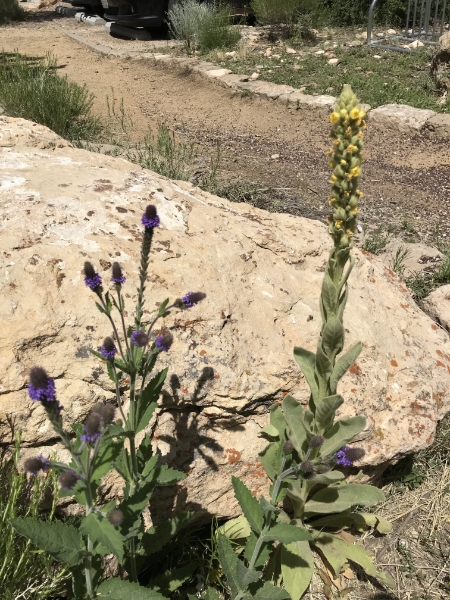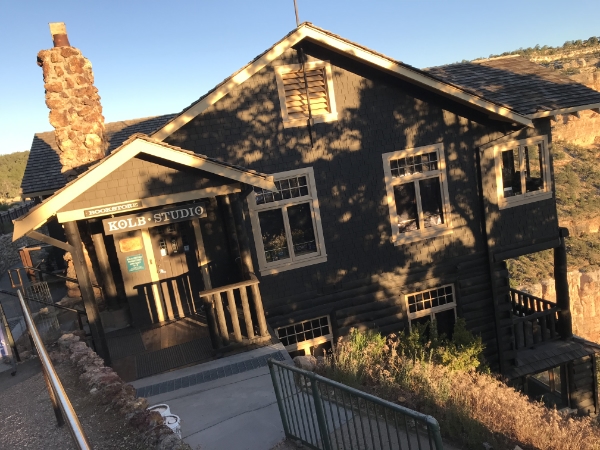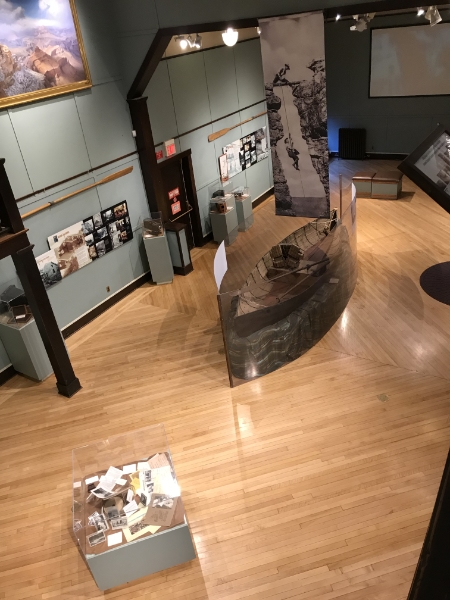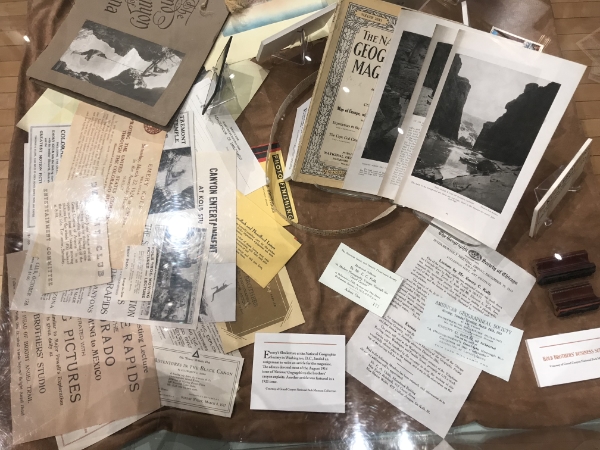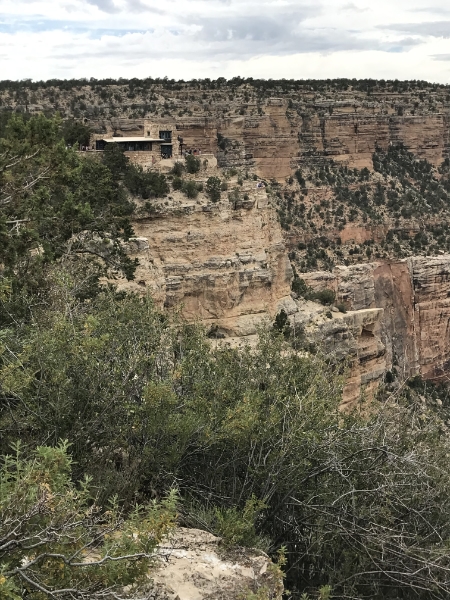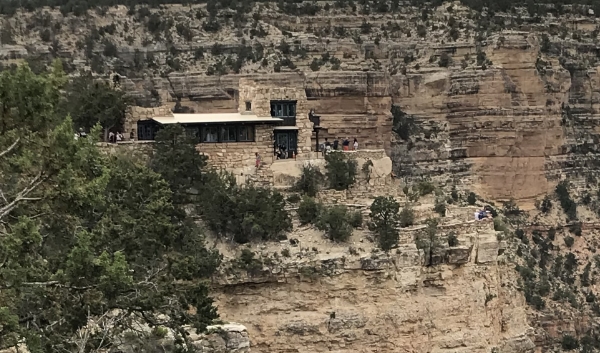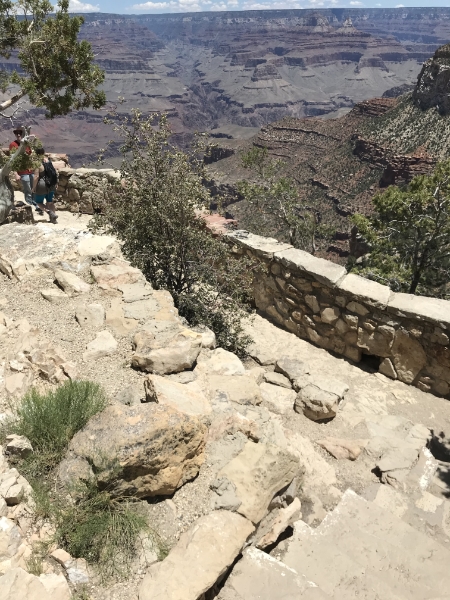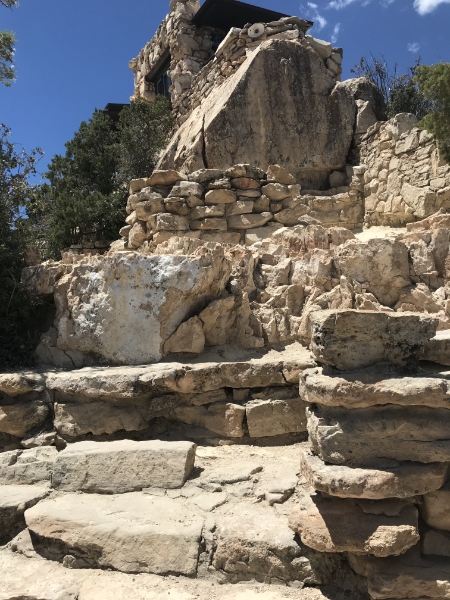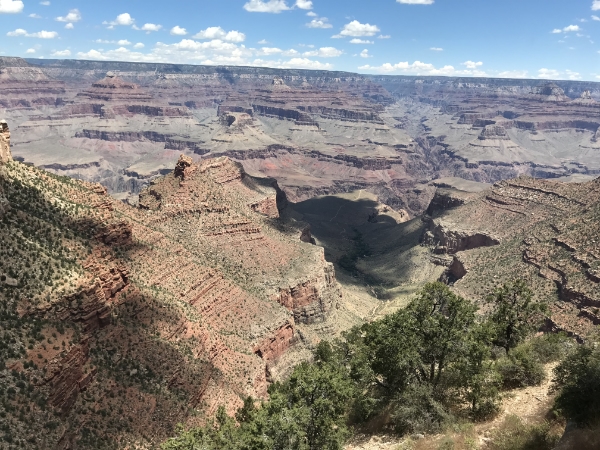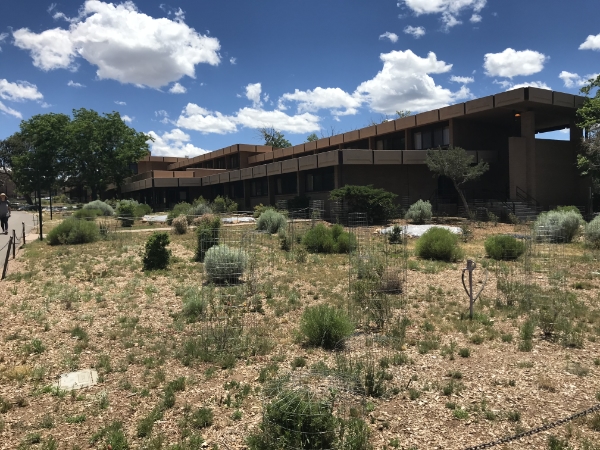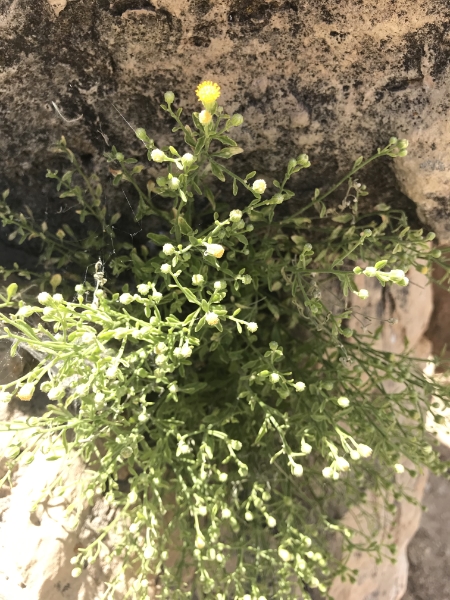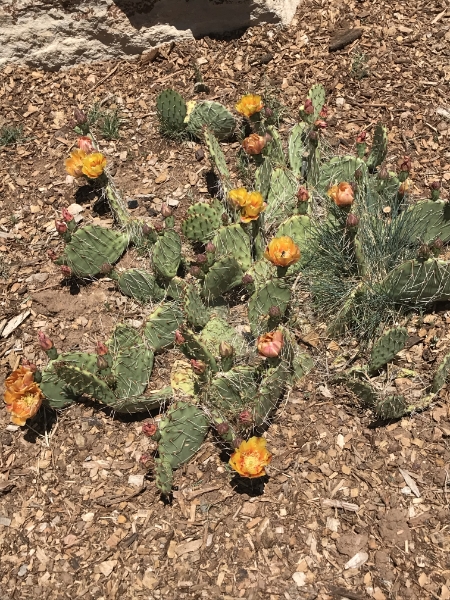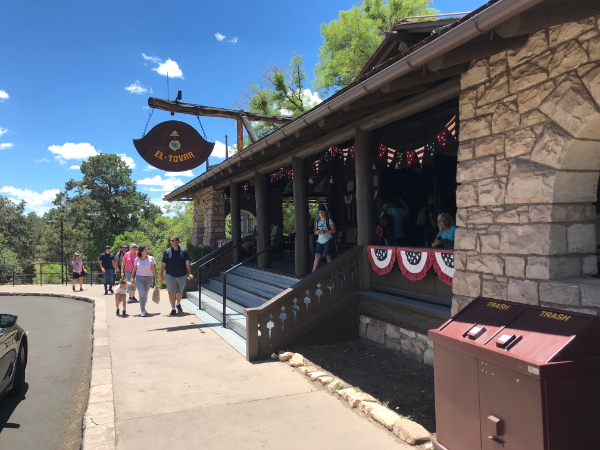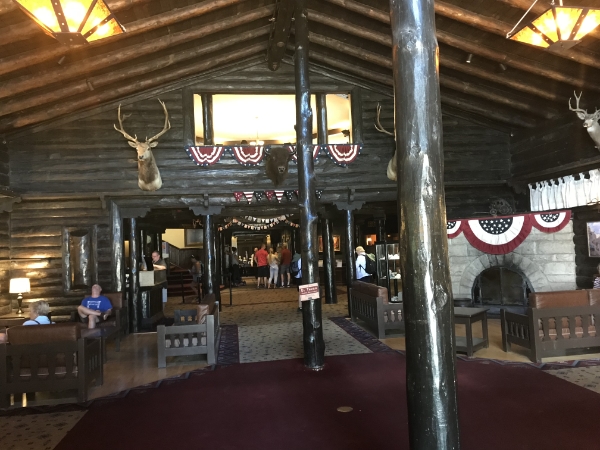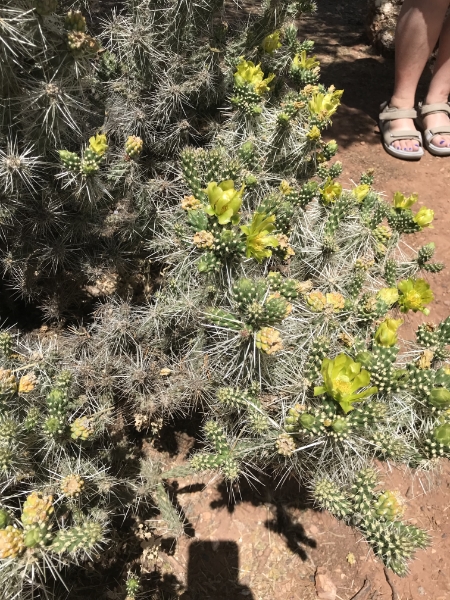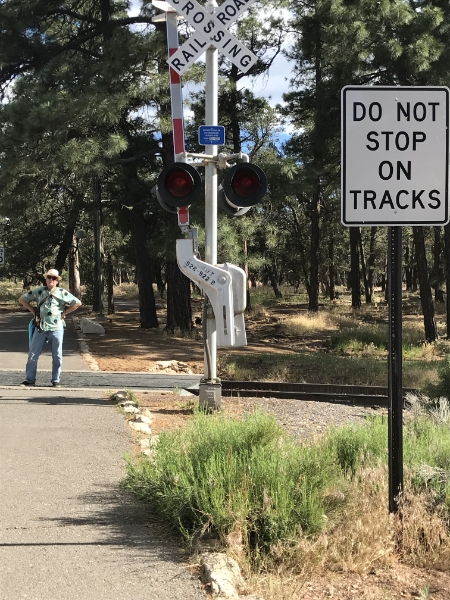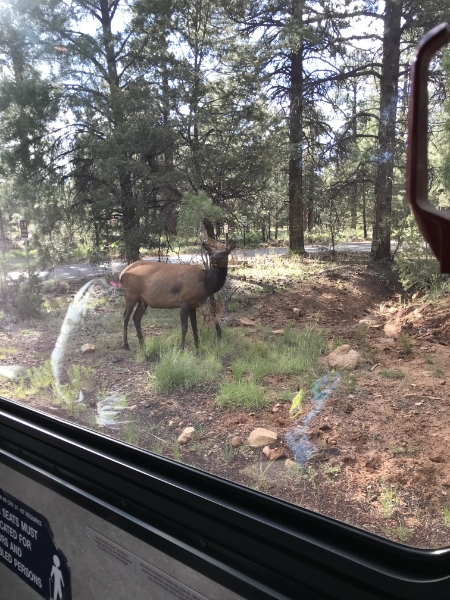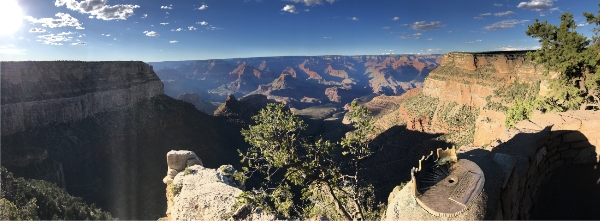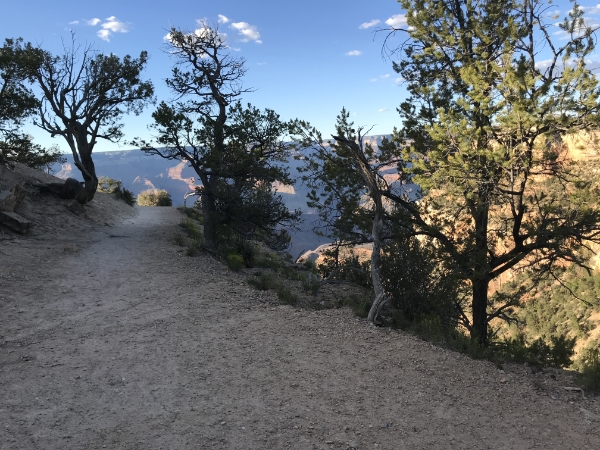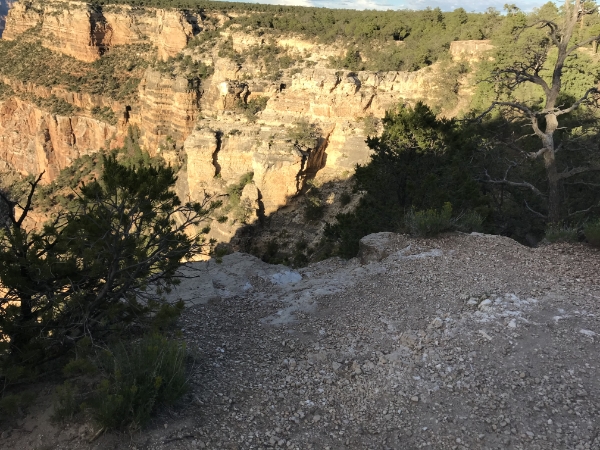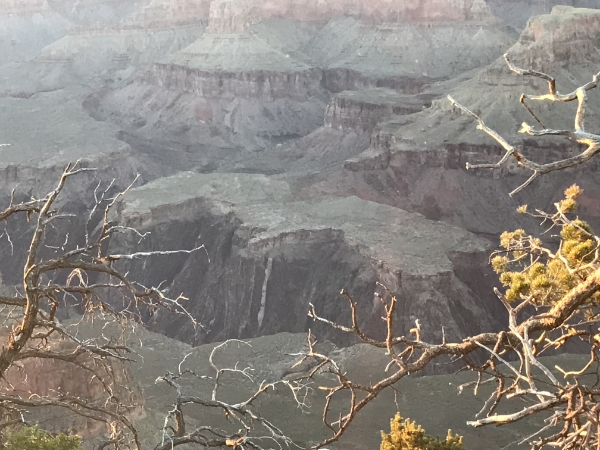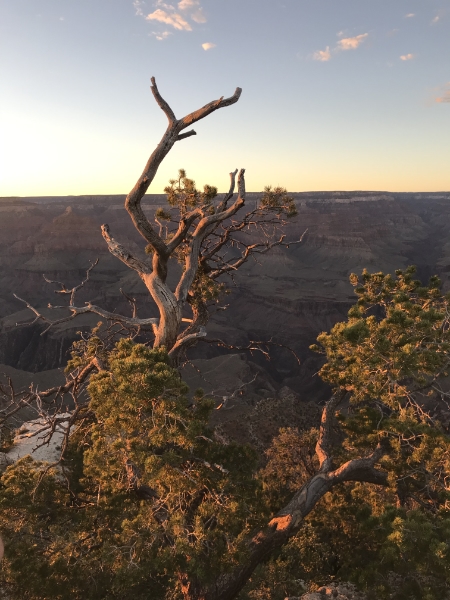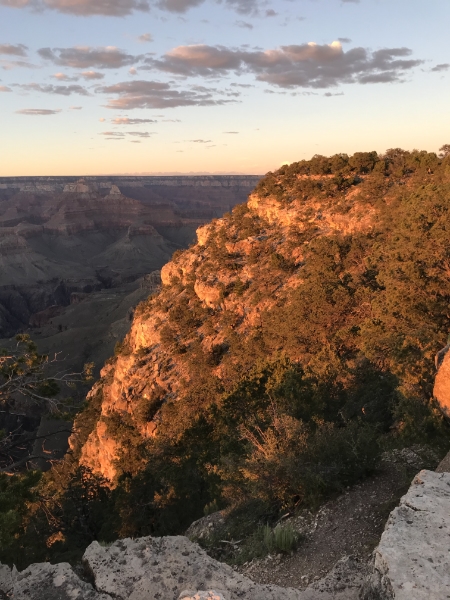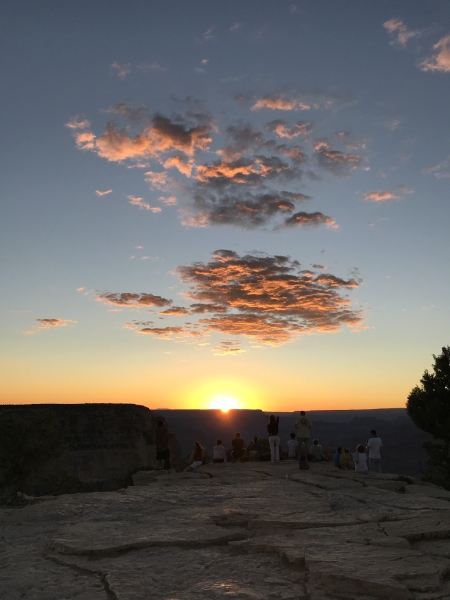Monday, July 1: It’s Georg Christoph Lichtenberg’s 277th birthday!
I went out to sit by the canyon and work on yesterday’s post, but it was a little chilly so early in the morning, so I thought I’d mosey over to the lodge and type. (The Lovely First Wife was still asleep.)
But my way was blocked.
Two young mule deer standing in the parking lot, unsure of what to do next. “I don’t know, Becky, why don’t you ask him?” “No, you. Is that a tick on your flank?”
A trio of guys came up the other end of the parking lot. They stopped. The deer dawdled. Finally a car started up the lot, and they took action, springing away to… the nearest patch of grass.
After breakfast, we hopped the Blue Route over to the Visitor Center for the Critter Talk, a ranger-led chat for children. This one involved the pelt of a javalina, a smallish wild pig that flocks in the park. The main point was to leave the wildlife alone; we were reminded that the squirrels are the most dangerous. (When the children were asked to name the three predators of javalinas, they stalled out after mountain lions and coyotes, so I suggested squirrels. I was ignored.)
It was decided after the Critter Talk that we’d hop on the Blue Route and go see what the General Store had to offer. The first eight seats on the buses are reserved for the elderly and the handicapped, and if you’re sitting in one that’s needed you are expected to vacate the seat for the less young and healthy. This particular bus driver was eager to assist the elderly, apparently, because he told two young people to rise and let us have their seats. We informed him that we were not that elderly.
At the General Store, I was looking for a carabiner clip to make it easier for me to get my water bottle off my satchel, and the Lovely First Wife is always looking for something. The General Store has a complete collection of camping equipment, plus a grocery store, and you may recall that in Arizona they are sensible and sell liquor where it’s most convenient. So in addition to the clip I bought these:
They will have to wait until we get home for an evaluation. I’m not flying with open bottles of anything.
Of course, some believe that a suitcase full of cloth is not cushion enough; the Lovely First Wife went into the post office to buy bubble wrap, and while I waited, the surface of the bench I was sitting on attracted my attention:
The weathering of the wood reminded me of the topography of the Canyon, and it led me to a Deep Thought: the beauty of the Canyon is the result of a half a billion years of loss, not only along the main path of the Colorado River, but also from the tributaries along the way. Without the loss of those trillions of tons of rock and sand, now somewhere at the bottom of the Gulf of California, there would be no Grand Canyon.
I’m sure there’s a philosophical point to be made here. Maybe it will come to me.
More flowers:
And these:
The one on the right looked like it might be a relative of tobacco.
Back in the Village, our first stop was the Kolb Studio.
The Kolb Brothers, Ellsworth and Emery, were part of the first tourist booms in the 1910s and 20s, settling on photography as their thing. They built a small studio at the head of Bright Angel trail and sold photos of the mule trains to the tourists, more or less the same as the roller coasters at Disney World.
Not only that, but they boosted tourism to the Canyon by taking many of the first photographs of the Canyon, followed by movies. Their one-room studio grew to a five-story structure perched on the canyon wall, including a lovely home for Emery and his wife, plus an auditorium for lectures and movies. That room is now an exhibit:
The boat is a “lightweight” collapsible boat they designed for their trips down the river. It is worth noting that the first time they did this they had absolutely no experience as river runners. And the immense amount of camera equipment and film they had to schlep here and yon was confounding.
Also note the amazing PR that the brothers did for the Canyon: hooking up with Fred Harvey, the National Geographic Society, and others, to spread the word of the the Canyon (and therefore their business) far and wide.
Up the hill from the Studio is the Lookout, designed by Mary Colter. Here I’d like to rave about her architecture for a moment.
Here is the Lookout:
As many times as I have walked past it, it was only yesterday that I noticed:
There’s a system of terraces beneath it on the canyon wall, made from the debris from the construction of the Lookout.
Her whole thing was to grow her buildings out of the land, looking like part of the landscape.
The view from the Lookout:
Colter’s work is organic, natural, completely of its place, and beautiful.
Contrast this, then, with the Thunderbird and Kachina Lodges, built in the 60s (I’m guessing), squatting between Colter’s Bright Angel Lodge and El Tovar:
Why did anyone think Brutalist anything was appropriate for the rim? I keep thinking that maybe they were wanting to bring the Canyon “up to date.” After all, they were mining uranium at the time over near Hermit’s Rest—and are still cleaning up that mess. The only advantage I can see to these institutional hotels is that some of their rooms actually overlook the canyon. Still, the whole thing is sore-thumb tasteless compared to the rest of the Village.
A little flower:
Prickly pears in bloom:
El Tovar’s front entrance:
El Tovar is a lovely old pile, all timber and stone. Very Teddy Roosevelt.
We had lunch on the cocktail lounge veranda, meeting a nice couple from Madison, WI, and their two adorable sons, along with the wife’s father who now lives in Sedona. Of the five adults there, three of us were theatre majors and four of us were educators.
Another cactus in bloom:
I could not resist. You know who you are.
We decided to go check out the Shrine of the Ages, an interdenominational chapel next to the Park cemetery. When we got there, it was not open, but I could peer enough in to see that it’s just a plain auditorium without much to recommend it.
While we were waiting for the shuttle back to the Village, an elk began his afternoon munching. The Lovely First Wife got a few shots; I got this one from the shuttle. (Drivers always stop for elk photos.)
The sun began to set, and we decided to walk along the rim trail toward Yavapai Point to see the sunset.
On the way, the Lovely First Wife snagged this portrait of a lizard, species unknown:
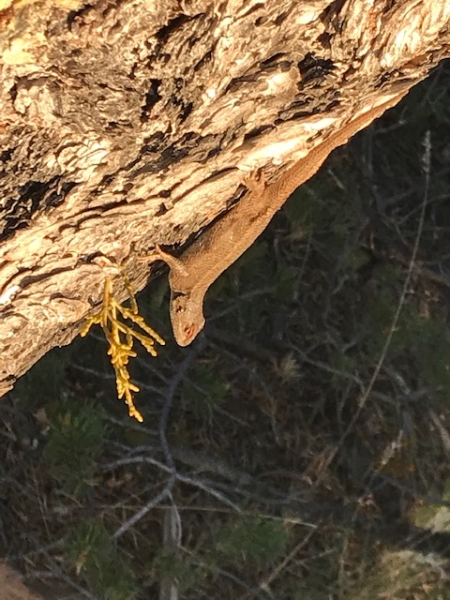
I would like to make a point with the next two photos.
These are the canyon edges, as in it’s a straight drop of a couple thousand feet right there. Nothing—I repeat, nothing—keeps you from walking right up to the edge. Common sense, perhaps. Humankind’s innate fear of edges of heights, maybe. But there are no constraints. Radical self-reliance, as we say in Burner Land.
Here’s an interesting photo:
Along the Rim Trail, as we said previously, there is the Walk of Time. One of the displays talked about about two billion years of missing geologic time: erosion simply wore away the surface of the earth, then deposited new stuff on the old. That’s what you’re seeing here. See the white stripe in the middle of the mesa, that just sort of stops short of the top? That’s where layers of rock were pushed up, as tectonic action is apt to do, and then the mountains that were created thereby (think the Himalayas, which are still growing) were completely eroded flat, becoming seabeds—and new layers were laid down on top of that.
That’s awesome, isn’t it?
We reached a pretty cool place to watch the sunset with a bunch of other people.
As usual, the Canyon is at its most seductive at sunset.
And the sunset was lovely.
We walked back in the dusk to the Village and had a simple supper in the Harvey Cafe at Bright Angel, then to bed.
